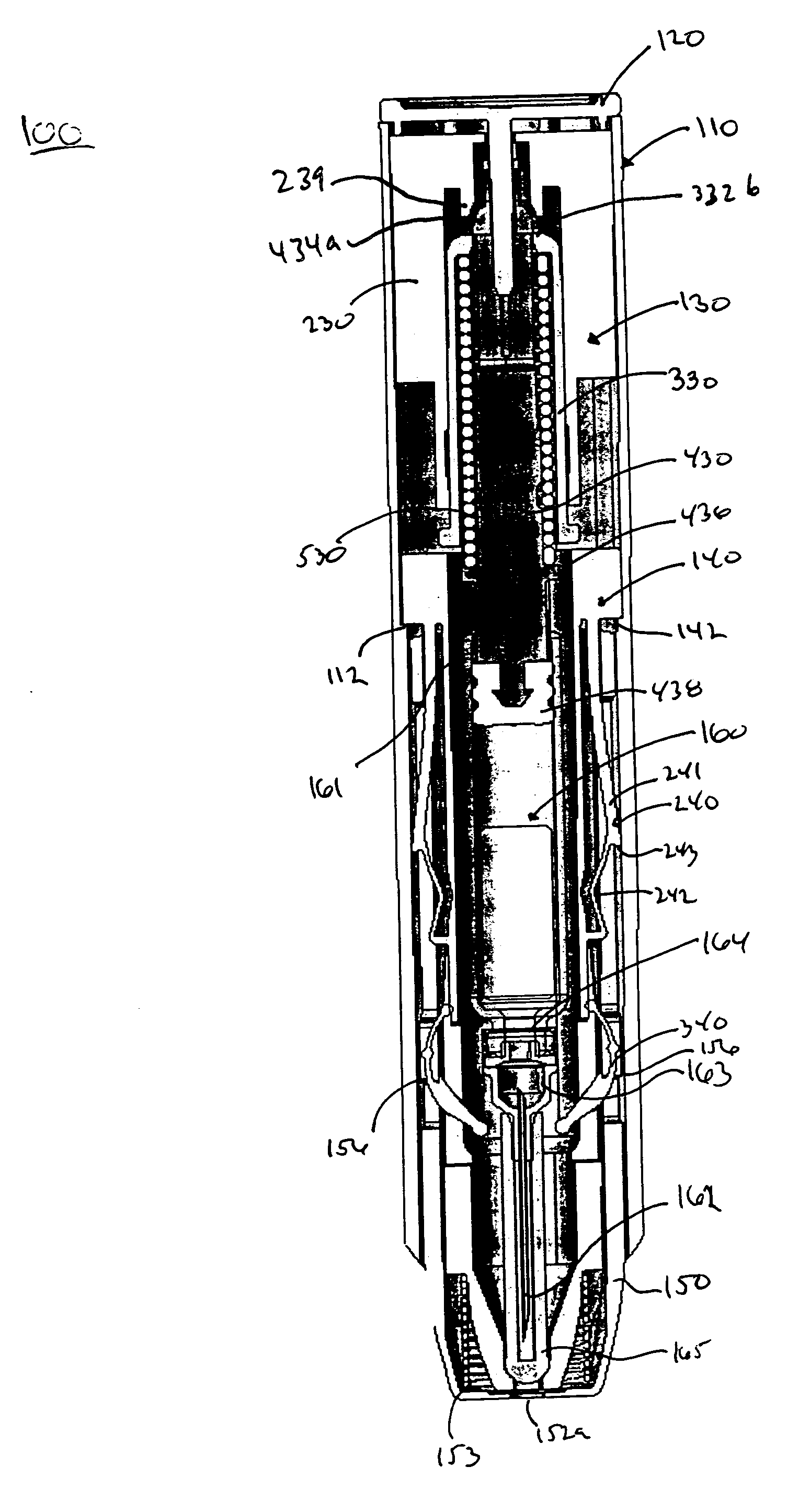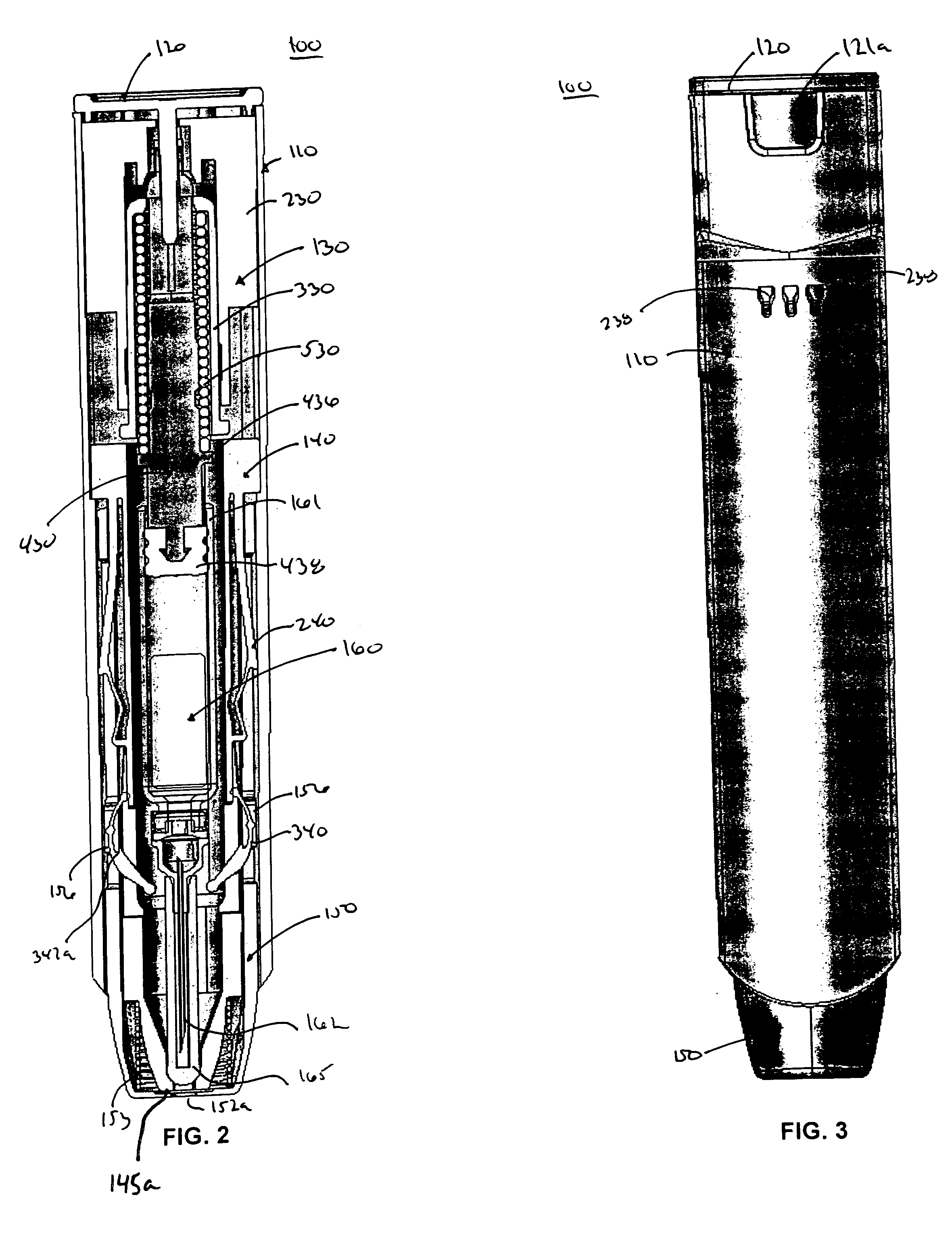Automatic injector
a technology of automatic injection and injector, which is applied in the direction of intravenous devices, infusion needles, other medical devices, etc., can solve the problems of fail-safe operation of the needle cover, and achieve the effect of preventing the rotation of the release pin and simplifying construction
- Summary
- Abstract
- Description
- Claims
- Application Information
AI Technical Summary
Benefits of technology
Problems solved by technology
Method used
Image
Examples
Embodiment Construction
[0078] It should be appreciated that some of the components described herein are conventionally known in the broader aspects, as described in U.S. Pat. No. 4,031,893 (“the '893 patent”) hereby incorporated by reference in its entirety, and thus not described in unnecessary detail here. It should also be appreciated that known modifications or variations to the '893 patent can apply equally to the auto-injector of the present invention as will be described below. These modifications or variations include embodiments described in U.S. Pat. Nos. 4,226,235; 4,329,988; 4,394,863; 4,723,937; and U.S. Ser. Nos. 09 / 985,466; 10 / 285,692, each of which is incorporated by reference in its entirety for the full teachings therein.
[0079] An auto-injector 100 of the present invention will now be described in greater detail in connection withFIGS. 1-59. The auto-injector 100 includes an outer body 110, a release pin 120, a power pack 130, a cartridge container 140, a needle cover 150 and a cartridg...
PUM
 Login to View More
Login to View More Abstract
Description
Claims
Application Information
 Login to View More
Login to View More - R&D
- Intellectual Property
- Life Sciences
- Materials
- Tech Scout
- Unparalleled Data Quality
- Higher Quality Content
- 60% Fewer Hallucinations
Browse by: Latest US Patents, China's latest patents, Technical Efficacy Thesaurus, Application Domain, Technology Topic, Popular Technical Reports.
© 2025 PatSnap. All rights reserved.Legal|Privacy policy|Modern Slavery Act Transparency Statement|Sitemap|About US| Contact US: help@patsnap.com



